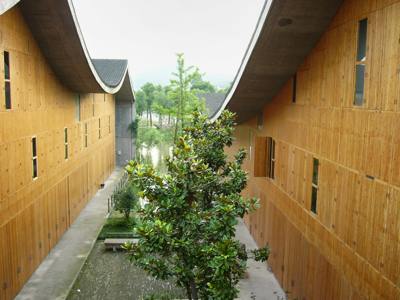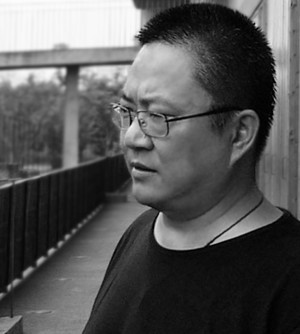 An architect who uses recycled building materials from historic buildings torn down to make way for China’s megacities has won architecture’s most prestigious international award, the 2012 Pritzker Architecture Prize.
An architect who uses recycled building materials from historic buildings torn down to make way for China’s megacities has won architecture’s most prestigious international award, the 2012 Pritzker Architecture Prize.
Wang Shu, 48, whose Hangzhou-based firm Amateur Architecture Studio has just four permanent staff, was widely regarded as a long shot to win the $100,000 prize that has previously been awarded to celebrity architects such as Norman Foster and Frank Gehry, CNN reported.
“For myself, being an artisan or a craftsman, is being an amateur or almost the same thing,” Wang said in a press release, using the word in its true meaning as one who does something for love rather than money or professional accolades.
Wang Shu spent the decade following his education in China immersed in research on the environmental impact of architecture and the renovation of old buildings, and working with craftsmen to gain experience in actual building, without the responsibility of design.
 In 2000, he had completed his first major project, the Library of Wenzheng College at Suzhou University. In keeping with his philosophy of paying scrupulous attention to the environment, and with careful consideration of traditions of Suzhou gardening which suggests that buildings located between water and mountains should not be prominent, he designed the library with nearly half of the building underground. In 2004, the library received the Architecture Arts Award of China. In later projects, he remained true to his methods of economy of materials, in one case salvaging over two million tiles from demolished traditional houses to cover the roofs of campus buildings of the the China Academy of Art in 2004 (top photo).
In 2000, he had completed his first major project, the Library of Wenzheng College at Suzhou University. In keeping with his philosophy of paying scrupulous attention to the environment, and with careful consideration of traditions of Suzhou gardening which suggests that buildings located between water and mountains should not be prominent, he designed the library with nearly half of the building underground. In 2004, the library received the Architecture Arts Award of China. In later projects, he remained true to his methods of economy of materials, in one case salvaging over two million tiles from demolished traditional houses to cover the roofs of campus buildings of the the China Academy of Art in 2004 (top photo).
Upon learning that he was being honored, Wang Shu said, “This is really a big surprise… I suddenly realized that I’ve done many things over the last decade. It proves that earnest hard work and persistence lead to positive outcomes.”
In announcing the jury’s choice, Pritzker elaborated on its website, “The fact that an architect from China has been selected by the jury, represents a significant step in acknowledging the role that China will play in the development of architectural ideals. In addition, over the coming decades China’s success at urbanization will be important to China and to the world. This urbanization, like urbanization around the world, needs to be in harmony with local needs and culture. China’s unprecedented opportunities for urban planning and design will want to be in harmony with both its long and unique traditions of the past and with its future needs for sustainable development.”
(READ more on the story from CNN.com)



















